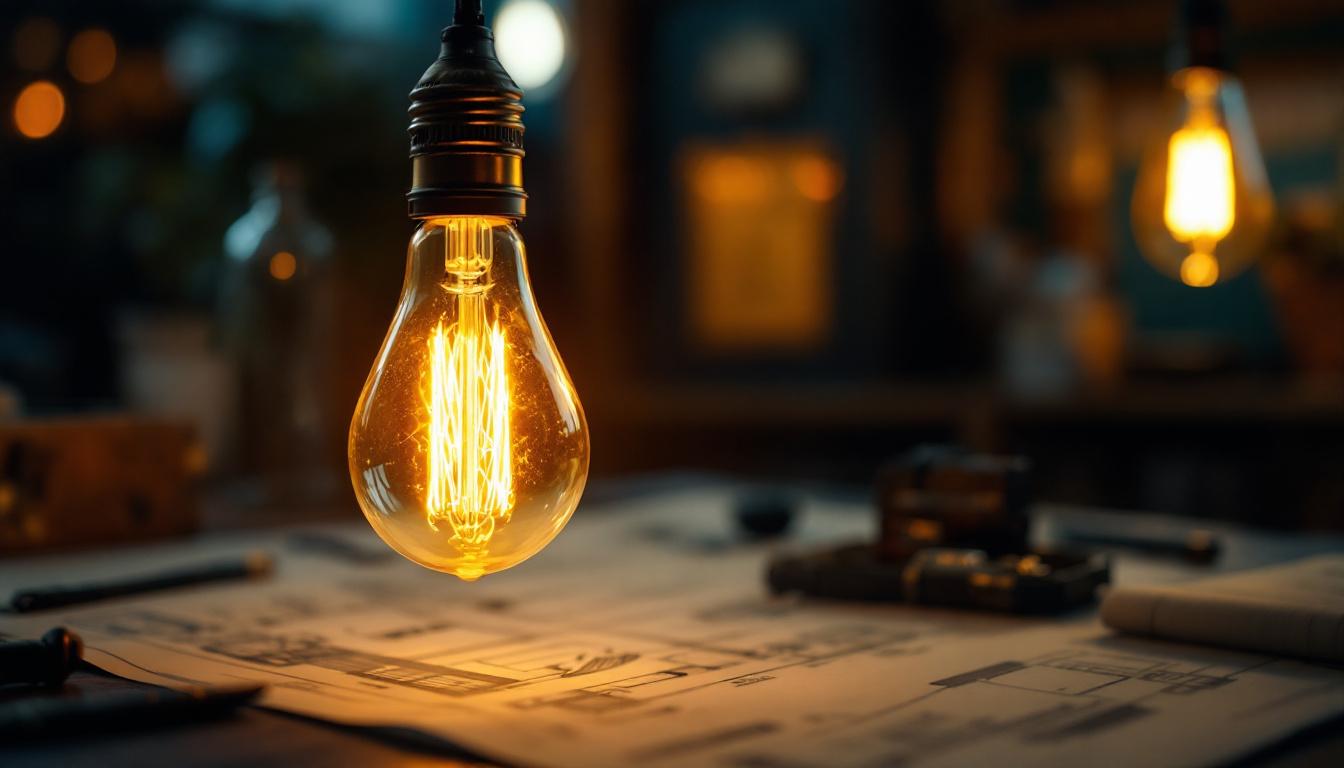
In the world of lighting design, particularly in commercial and industrial settings, the choice of fixtures can significantly affect both functionality and aesthetics. When it comes to 8′ LED shop lights, making informed decisions is crucial for contractors aiming to deliver quality results while avoiding unnecessary expenses. This article will explore common pitfalls and provide guidance on how to navigate lighting projects effectively.
Lighting is not merely a functional necessity; it plays a vital role in creating an environment that enhances productivity, safety, and overall satisfaction. In workshops and commercial spaces, the right lighting can improve visibility, reduce eye strain, and even influence mood and efficiency. The psychological effects of lighting are profound; studies have shown that well-lit environments can boost morale and foster creativity among employees, leading to a more engaged and motivated workforce.
For contractors, understanding the specific requirements of the space is essential. Factors such as ceiling height, the type of work being performed, and the color of the walls can all impact the effectiveness of lighting solutions. Therefore, a thorough assessment of these elements should precede any installation. Furthermore, incorporating natural light where possible can significantly enhance the overall atmosphere, making spaces feel more inviting and less sterile. This can be achieved through the strategic placement of windows or skylights, which not only reduce energy costs but also improve the well-being of those who work within those spaces.
Before selecting 8′ LED shop lights, it is imperative to evaluate the workspace dimensions. Larger areas may require multiple fixtures to ensure even illumination, while smaller spaces might benefit from fewer, strategically placed lights. A common mistake is underestimating the number of fixtures needed, leading to inadequate lighting and potential safety hazards. In addition to the number of fixtures, the height at which lights are installed can also affect the quality of illumination; higher ceilings may necessitate more powerful fixtures or specialized lighting solutions to ensure that light reaches the work surfaces effectively.
Additionally, consider the layout of the space. For instance, workstations may need more focused lighting, while general areas could benefit from broader coverage. Understanding these nuances can help in creating a well-lit environment that meets the specific needs of the users. It is also beneficial to involve the end-users in the planning process, as their insights can guide decisions on light placement and intensity, ensuring that the final setup aligns with their workflow and comfort levels.
When selecting LED shop lights, understanding lumens and color temperature is crucial. Lumens measure the total amount of visible light emitted by a source; thus, choosing fixtures with the appropriate lumen output is essential for achieving the desired brightness. For example, a workspace that requires high attention to detail, such as a design studio or a repair shop, may benefit from higher lumen outputs to ensure that every detail is visible and clear.
Color temperature, measured in Kelvin (K), affects the ambiance of the space. Warmer temperatures (around 3000K) create a cozy atmosphere, while cooler temperatures (5000K and above) mimic daylight, which can enhance focus and productivity. Selecting the right color temperature for the intended use of the space is a common oversight that can lead to dissatisfaction with the final result. Moreover, the color rendering index (CRI) is another important factor to consider, as it measures how accurately colors appear under a light source compared to natural light. A higher CRI is particularly important in settings where color accuracy is crucial, such as in art studios or retail environments where product presentation is key.
The market offers a plethora of options when it comes to 8′ LED shop lights. However, not all fixtures are created equal. Factors such as energy efficiency, durability, and design should all play a role in the decision-making process.
Contractors must consider the specific needs of their clients and the environments in which the lights will be installed. For instance, fixtures designed for high humidity or extreme temperatures may be necessary for certain industrial settings. Choosing the wrong type of fixture can lead to premature failure and increased maintenance costs.
Energy efficiency is a significant factor in modern lighting design. LED technology is inherently more efficient than traditional lighting options, but not all LED products are equally efficient. Look for fixtures with high lumens per watt (LPW) ratings to ensure optimal performance.
Additionally, consider the long-term energy savings associated with LED shop lights. While the initial investment may be higher than traditional lighting, the reduced energy consumption and longer lifespan can lead to substantial savings over time. This is an important selling point for clients who are conscious of operational costs.
Durability is another critical factor when selecting 8′ LED shop lights. In environments where fixtures are exposed to dust, moisture, or physical impacts, choosing robust models that can withstand these conditions is essential. Look for products with high ingress protection (IP) ratings to ensure they are suitable for the intended environment.
Maintenance is a consideration that often gets overlooked. LED fixtures typically have a longer lifespan than traditional bulbs, but they can still require occasional maintenance. Selecting fixtures that are easy to clean and service can save time and money in the long run.
The installation process is a crucial phase in any lighting project. Proper installation not only ensures the lights function correctly but also enhances the overall effectiveness of the lighting scheme. Taking the time to follow best practices can prevent costly mistakes down the line.
Before installation begins, it is advisable to create a lighting plan that outlines the placement of each fixture. This plan should consider factors such as light distribution, potential obstructions, and the specific needs of the space. A well-thought-out plan can help avoid issues such as glare or uneven lighting.
Electrical considerations are paramount when installing 8′ LED shop lights. Ensuring that the electrical system can support the new fixtures is essential to avoid overloading circuits. Contractors should check the wattage and amperage requirements of the selected lights and confirm that the existing wiring can handle the load.
Additionally, consider the use of dimmers or smart lighting controls. These features can enhance the functionality of the lighting system and provide users with greater control over their environment. However, they must be compatible with LED technology to function correctly.
Safety should always be a top priority during installation. This includes following local electrical codes and regulations, using appropriate personal protective equipment (PPE), and ensuring that the work area is secure. Inadequate safety measures can lead to accidents and injuries, resulting in costly delays and liability issues.
Furthermore, it is essential to educate clients on the proper use and maintenance of their new lighting system. Providing clear instructions on how to operate dimmers or smart controls can help clients maximize the benefits of their investment.
Once the installation is complete, testing the lighting system is a critical step that should not be overlooked. Conducting thorough tests ensures that the fixtures are functioning correctly and meeting the intended design specifications.
During the testing phase, evaluate the distribution of light throughout the space. Look for any areas that may be overly bright or dim and make adjustments as necessary. This attention to detail can make a significant difference in the overall effectiveness of the lighting system.
After the installation and testing are complete, gathering feedback from the client is an essential step in the process. This feedback can provide valuable insights into the effectiveness of the lighting solution and highlight any areas for improvement in future projects.
Encouraging clients to share their experiences can also foster long-term relationships and lead to repeat business. Satisfied clients are more likely to recommend services to others, contributing to the growth of a contractor’s reputation in the industry.
Even experienced contractors can fall victim to common mistakes when working with 8′ LED shop lights. Recognizing these pitfalls can help avoid costly errors and ensure successful project outcomes.
One common mistake is failing to consider future needs when designing a lighting system. As businesses grow and evolve, their lighting requirements may change. It is wise to choose flexible solutions that can be easily adapted or expanded as needed.
For instance, incorporating modular lighting systems can allow for easy adjustments and upgrades without the need for a complete overhaul. This foresight can save clients time and money in the long run.
Another critical mistake is overlooking local regulations and building codes. Each jurisdiction may have specific requirements regarding lighting design, energy efficiency, and safety standards. Failing to comply with these regulations can lead to fines, project delays, and even legal issues.
Contractors should familiarize themselves with local codes and ensure that all installations meet or exceed these standards. This diligence not only protects the contractor but also enhances the credibility of their work.
In conclusion, selecting and installing 8′ LED shop lights requires careful consideration and planning. By understanding the importance of proper lighting, choosing the right fixtures, following best installation practices, and avoiding common mistakes, contractors can deliver high-quality lighting solutions that meet the needs of their clients.
Investing time and resources into the planning and execution of lighting projects can lead to significant long-term benefits, including enhanced client satisfaction, reduced maintenance costs, and improved energy efficiency. By prioritizing these aspects, contractors can establish themselves as trusted professionals in the lighting industry.
Ready to elevate your lighting projects with the best value in the industry? Look no further than LumenWholesale for all your 8′ LED shop light needs. Our commitment to quality and affordability ensures that you can provide your clients with top-notch, spec-grade lighting solutions without the burden of inflated costs. With free shipping on bulk orders, you can stock up on superior lighting products and pass the savings onto your clients. Don’t let hidden fees dim your project’s potential. Wholesale Lighting at the Best Value is just a click away. Experience the LumenWholesale difference today!

Illuminate your projects with precision using flood light motion sensors.

Discover the essential resources lighting contractors rely on to master steel light post installations.

Discover how modern exterior house lights are revolutionizing efficiency for lighting contractors.

Discover the timeless allure of antique light bulbs and explore top strategies from lighting contractors to seamlessly integrate these vintage gems into modern spaces.